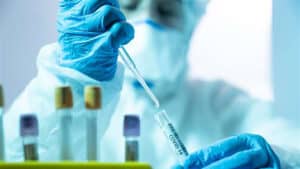Extract from LA Times 16th November 2020
Desperately seeking to find a seemingly responsible way to hold dinner parties, some people have started to get tests for the coronavirus as a way to clear themselves to attend dinner parties without needing to wear masks or keep their distance. That’s absolutely the wrong thing to do, according to Barbara Ferrer, Los Angeles County’s director of public health. Ferrer said on Monday that she has heard of groups of young adults going to get tested for the coronavirus on a Thursday in hopes of getting the negative results by Saturday morning, and then having a dinner party on Saturday night. But such tests provide a false sense of security — and engaging in this practice can still result in the dinner party becoming a super-spreading event that can transmit the highly contagious virus widely.
“That’s actually a false sense of security. It’s a false narrative,” Ferrer said.
“Your test result that you got Saturday morning was from Thursday when you got tested, and it said, ‘On Thursday, you were negative,’” Ferrer said. “It says nothing about whether you’re still negative on Saturday. “I do want people to understand that testing on Thursday so you can party on Saturday: That doesn’t work. It’s not a good idea. It’s not effective and you really are in some ways wasting a valuable resource,” Ferrer said. Tests can provide misleading results. If a person is tested shortly after becoming infected but before the virus has reproduced enough copies of itself, a test could fail to detect the virus and produce a false negative result. It’s also possible that a person can be exposed to the virus just after getting a test on a Thursday and be contagious by the time the party is held on a Saturday. A large percentage of people can get infected with the coronavirus, be highly contagious but never show symptoms of illness. As Ferrer put it, “This isn’t like we don’t know what to do. This is about getting back to doing what works. “As a community and as individuals, we’re going to need to be laser-focused on reducing transmission,” she said during a briefing. “To say many lives are at stake is not an exaggeration.”
Comment:
This article demonstrates that to rely on Coronavirus testing is not always effective, in this case because of the delay between testing and results. A more effective measure would be to temperature test daily, preferably four to six times a day so that any trends can be identified. In the case of a temperature related virus it takes time for our body’s’ temperature to rise to fever level and so regular temperature testing will identify a trend in continuous rises.
Our bodies are pretty consistent and remain at or around 36.6 oC but as our body temperature increases to above 37 oC it is typically on its way towards fever according WHO (World Health Organisation) who site 37.5 oC as fever level. According to a NHS website a high temperature is usually considered to be 38C or above. The trick to spotting the onset of fever is to check temperature regularly every day and on the occasion that is rises to 37.5 oC then the prediction is that a fever is on the way. Like all prediction, by nature they are estimates and could be wrong but there likely to be an better than 80% probability that this prediction is right so the dice is weighted in the testers favour and this could facilitate early treatment in order to prevent further rise in temperature and prolonged illness. Wouldn’t it be great if we could predict the onset of illness?
Imagine in a COVID-19 global pandemic if we could isolate much earlier, reducing contact and transmission, how much more quickly could we eliminate the virus a return to our ‘normal’ ? As much as this is a rhetorical question it does open up the discussion as to if we had wide scale fever temperature testing in January 2020 and could therefore mathematically predict the onset of Coronavirus, therefore take action earlier, would it have been necessary to have been a second lockdown?





